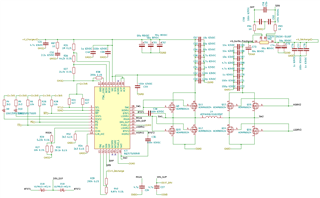Other Parts Discussed in Thread: BQSTUDIO
Tool/software:
Hello,
I'm using the BQ25750 to make a 12S NMC battery charger : 50V/15A
I'm able to charge correctly at different current values but in no load condition the VBAT_OV_STAT is trigged.
Do you have any recommendations to avoid this condition ? Below my schematic, thanks for the help.


